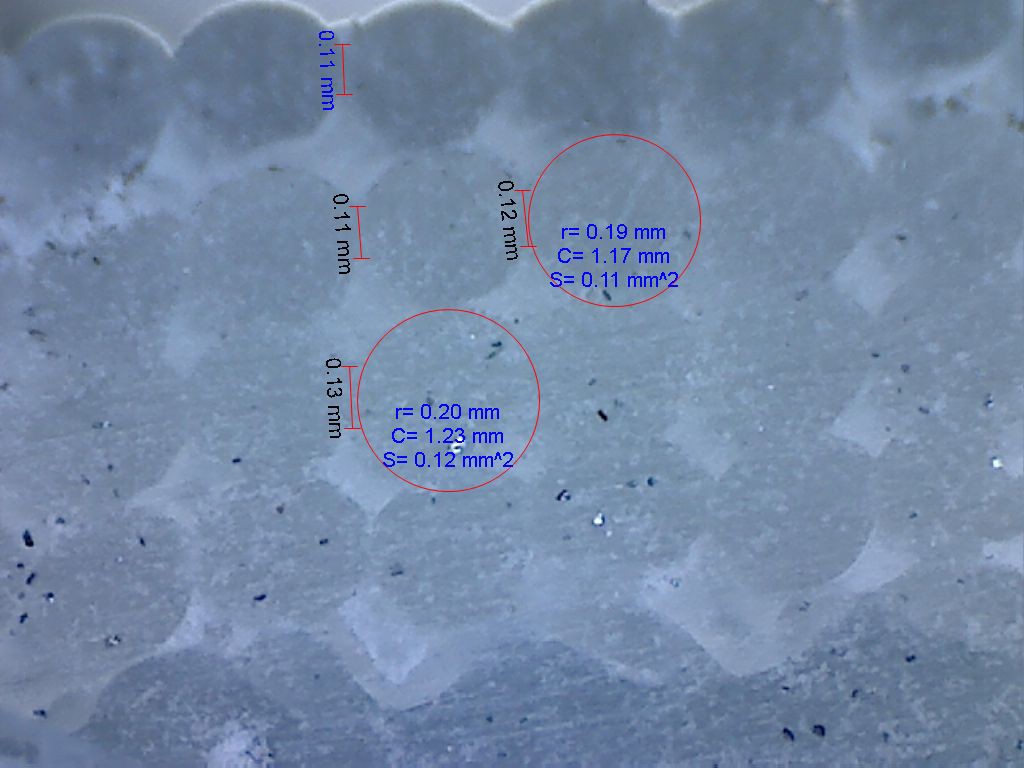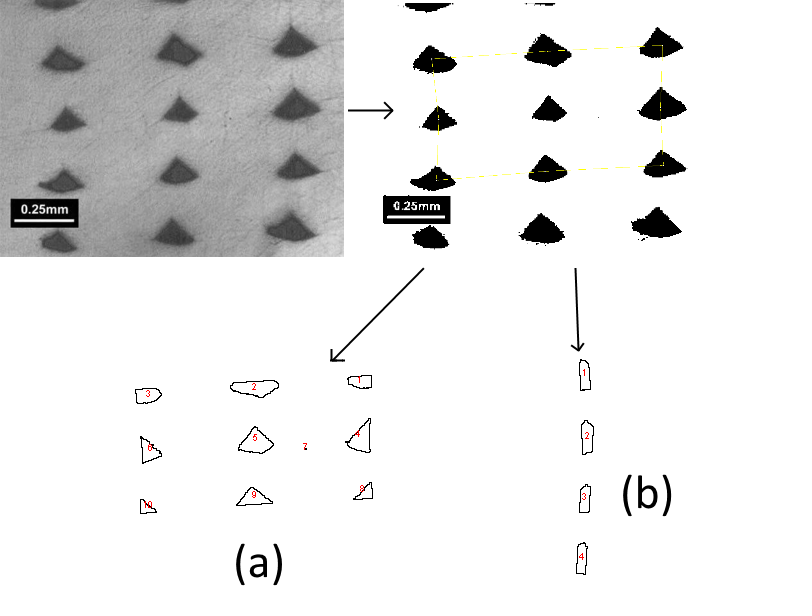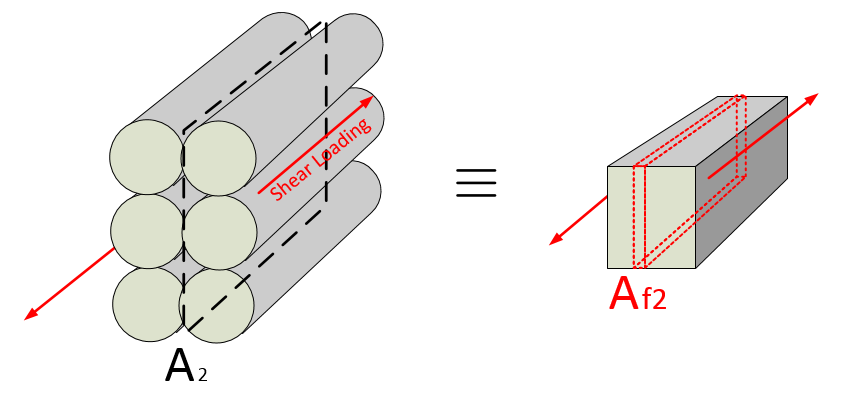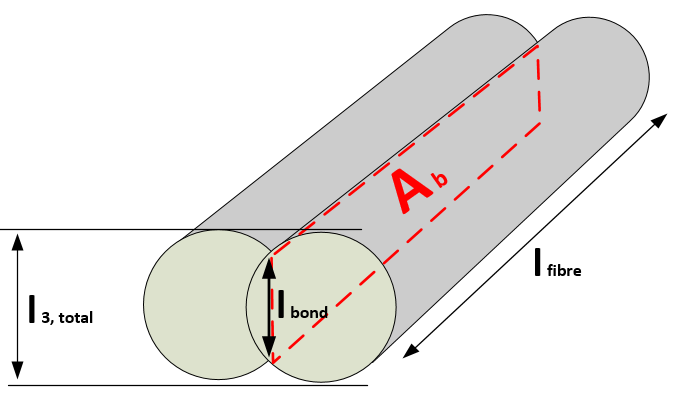Note: To save pages of mathematical formulae and reasoning, derivations and full explanations are not reproduced here. See the attached research notebook files for full details of the analysis.
Simplifying assumptions allowed representing material stiffness matrix from the 36-parameter fully-anisotropic state to the much simpler case of transverse isotropy.
The following models use measurements of the cross-sectional properties of the produced specimen to predict the mechanical strength - meaning the mechanical strength can be predicted using only a cheap USB microscope!

Using a cheap USB microscope to measure the material bonding lengths and bonding area.
A freely available program such as ImageJ can then be used to find the void density of the material as shown below. The void density, the ratio of air volume to the final part volume, is an important measure and can be used to predict the mechanical properties as discussed below.

Composite Strength Modelling
As derived in the attached research notebook, the multiaxial failure criterion was selected for predicting failure of the specimen. First, some notation
Longitudinal tensile strength is basically the tensile strength along the fibre; intralaminar shear strength is the strength relevant to shearing between the fibre bonds; transverse tensile strength is the tensile strength across the fibre.
This criterion states that failure occurs when the following equation is satisfied:
In simple terms, this means that all that is required to characterise the strength is the three material strengths. These were found to be easily and accurately predictable from void density measurements.
Longitudinal Tensile Strength
If the void density is measured, the longitudinal tensile strength can simply be approximated by the equation
The subscript 'ty' denotes the material tensile yield strength, which is a property of the bulk material (31.0 MPa for PA-747 ABS).
Intralaminar Shear Strength
To produce a simple model for the intralaminar shear strength, the effective shear-load carrying area was found:
The intralaminar shear strength is simply related to the void density as:
Transverse Tensile Strength
The transverse tensile strength was found to be a function of the interfibre bonding length ratio:
LetThe transverse tensile strength was then found to be a very basic function of this bonding length ratio:
Summary
We have developed a very simple strength model based on cross-sectional measurements.
Calculating these S values means that we can predict loading required to satisfy the multiaxial strength criterion - and thus predict when the material will fail!
 Sam Barrett
Sam Barrett

Discussions
Become a Hackaday.io Member
Create an account to leave a comment. Already have an account? Log In.